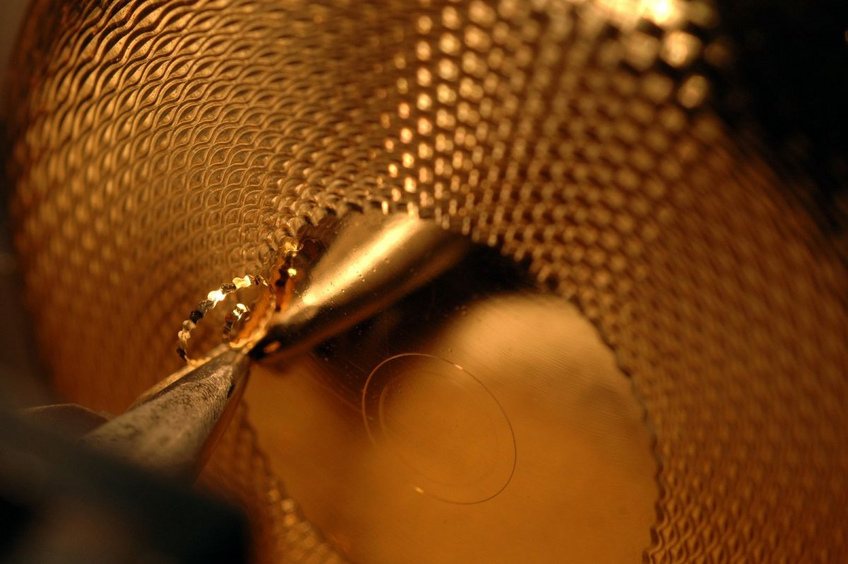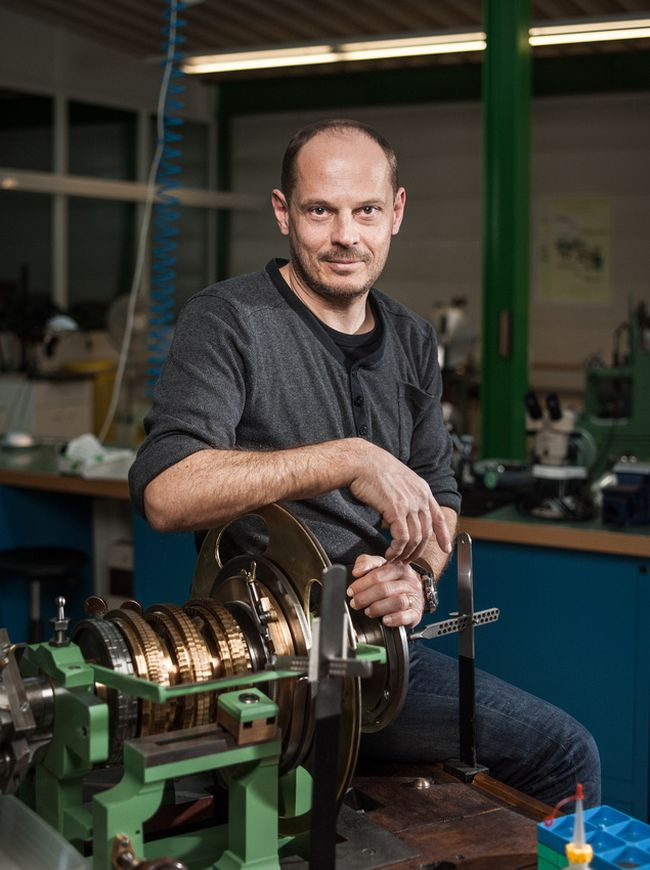

Décors Guillochés, excellent decoration and guilloché arts
EPHJ 2015. Half way between engraving and sculpting, this art dates back to the 16th century. It consists of decorating with engraved features that are sculpted in intaglio and crisscrossed. Yann von Kaenel, guardian of these skills, states: “The image of guilloché art is man himself”.
We are always talking about fine crafts and craftsmen. Yet, if there is one that truly deserves the name, it is guilloché craftsmen, even if they are not part of some obscure Japanese-inspired tradition based on old lacquer. After the EPHJ-EPMT-SMT, Switzerland’s most important professional event dedicated to subcontractors, this craft deserves the spotlight.
Controlling materials and decorating surfaces
Guilloché art incarnates the quest for beautiful things and accomplishing aesthetics. Its added value might be that it is one of few watchmaking activities not to serve a functional purpose.
For over 200 years, watchmakers, including the great Abraham-Louis Breguet, have strived to “do better than necessary”. They have always been committed to the aesthetics of the components in their pieces’ visible surfaces. In the beginning, the art mainly concerned organic materials such as wood or ivory and sometimes natural stones. It was also mostly seen on women’s accessories.

The transparent back trend as a boost to guilloché art
The guilloché art has had huge success since transparent backs made their debut. Indeed, they reveal the ‘interior beauty’ of timpieces, i.e. their movement and gears. Today, every brand wants to decorate those previously hidden micromechanical surfaces. They often start with symmetrically arranged and stacked lines, circles or concentric or aligned shapes. The infinitesimal interlacing of grooves and crests is sometimes transformed into reliefs with surprising reflections and brightness. Guilloché art has also been extended to every piece of empty space that may be left on dials after machining.
An endless series of executions is carried out to obtain the patterns. They allow for any level of finishes since they can also be made from ‘artistically’ programmed industrial machines. However, hand-made guilloché remains the magic formula. The old techniques used by guilloché craftsmen – and hand-engraving craftsmen – are fascinating.

Famous designs
Some geometric patterns such as “Clous de Paris”, “Grain d’Orge”, “Flinqué” (made of crossed or interlaced straight lines or curves), “Soleil”, “Grains de riz” décor or “Paniers” have become quite famous. Décors Guillochés, situated in Cernier, Neuchâtel, developed hundreds of other patterns, some of which filed for intellectual property rights.
In addition to well-known and usual patterns, Décors Guillochés added several contemporary, exclusive, innovating and unique designs to its list of excellent decorating skills. The family that owns the SME practices Guilloché art and is no stranger to exhibitions related to sharing skills and passion. This obviously resulted into the creation of the Guinel jewelry collection.



